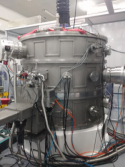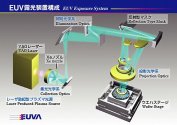A perfect candidate for SMIC N+1? but sadly it will be FAB by TSMC. 
By CnTechPost
Chinese search giant Baidu its in-house developed 7nm AI chip Kunlun 2 is about to be mass-produced to further enhance the arithmetic advantages of its AI cloud.
Kunlun 2's performance is said to be three times better than its predecessor, and Baidu said it will be deployed in areas including search, industrial internet, and intelligent transportation.

(Source: Baidu)
Announced in 2018, "Baidu Kunlun" is China's first cloud-based full-featured AI chip developed by Baidu.
Kunlun 1 had been mass-produced more than 20,000 pieces and had achieved application deployment as of the middle of December 2020.
Baidu has been No. 1 in China for three consecutive years in terms of AI patent applications and licenses. Baidu AI open platform brings together 2.65 million developers, making it China's leading AI mass production platform with integrated hardware and software.
The strength of AI technology is bringing new profit growth for Baidu. The company announced today that its revenue rose 5% year-on-year to RMB 30.3 billion ($469 billion) in the fourth quarter of 2020, beating analysts' estimates of 30.06 billion yuan, according to IBES data from Refinitiv.
In the fourth quarter, Baidu AI Cloud revenue grew 67 percent year-on-year, with full-year revenue of about RMB 13 billion. Baidu has ranked first in AI Cloud market share three consecutive times, according to IDC.
By CnTechPost
Baidu's 7nm AI chip Kunlun 2 to be mass-produced soon
February 18, 2021Chinese search giant Baidu its in-house developed 7nm AI chip Kunlun 2 is about to be mass-produced to further enhance the arithmetic advantages of its AI cloud.
Kunlun 2's performance is said to be three times better than its predecessor, and Baidu said it will be deployed in areas including search, industrial internet, and intelligent transportation.

(Source: Baidu)
Announced in 2018, "Baidu Kunlun" is China's first cloud-based full-featured AI chip developed by Baidu.
Kunlun 1 had been mass-produced more than 20,000 pieces and had achieved application deployment as of the middle of December 2020.
Baidu has been No. 1 in China for three consecutive years in terms of AI patent applications and licenses. Baidu AI open platform brings together 2.65 million developers, making it China's leading AI mass production platform with integrated hardware and software.
The strength of AI technology is bringing new profit growth for Baidu. The company announced today that its revenue rose 5% year-on-year to RMB 30.3 billion ($469 billion) in the fourth quarter of 2020, beating analysts' estimates of 30.06 billion yuan, according to IBES data from Refinitiv.
In the fourth quarter, Baidu AI Cloud revenue grew 67 percent year-on-year, with full-year revenue of about RMB 13 billion. Baidu has ranked first in AI Cloud market share three consecutive times, according to IDC.


